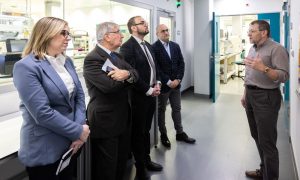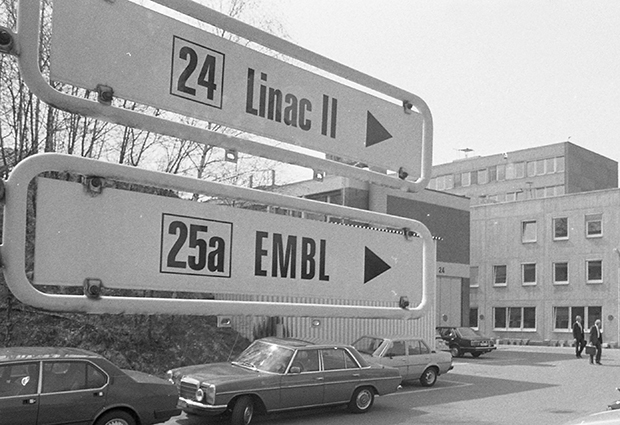
Read the latest Issue
From 27–29 November, EMBL Hamburg invites past and present friends, users and alumni to a 40th anniversary celebration at the Deutsches Elektronen-Synchrotron (DESY) campus. Festivities include a two-day symposium that will look at the history of the Hamburg outstation, the science undertaken at its beamlines, and the future of structural biology. Guests are also invited to join the symposium dinner, campus tours and reception at the Hamburg City Hall.

Symposium keynote speaker Michael Rossmann’s career as a crystallographer spans almost 70 years and encompasses some key developments in the field, including being the first to map the structure of the common cold virus to an atomic level, and identifying a frequently occurring motif in protein structures, now known as the ‘Rossmann fold’. In a preview interview, he looks back at the early days of synchrotron radiation and crystallography, and makes some predications about the future of structural biology.
In the very early days of synchrotron radiation, around 1981 or 1982, I went to DESY to collect data. It was not a very fruitful visit. I was there for about three weeks waiting for beam time – in those days of ‘parasitic use’ of the synchrotron, physicists were busy breaking atoms and we couldn’t get access. In desperation, I went to England to collect data at the Daresbury Laboratory. Since then, my group has been to DESY on a few other occasions to collect data on RNA viruses, which was more successful.
Soon after my first visit to DESY we started working at the Cornell High Energy Synchrotron source (CHESS) at Cornell University, and did a lot of good work there for many years. In 1995 the Advanced Photon Source in Chicago opened up close by, and since then we have done a lot of our research there. I have also visited other synchrotrons over the years, and visited Hamburg in 2013 where I enjoyed giving a talk at the new X-ray Free Electron Laser (XFEL) – as you know, there is now a strong focus on laser data.

I think the future of structural biology is with electron microscopy – although not to the exclusion of crystallography.
Most of the work that I and others have done has been in crystallography, but over the past three or four years, electron microscopy has become very dominant. I think the future of structural biology is with electron microscopy – although not to the exclusion of crystallography. I think electron microscopy will become far more important. I have been very much involved in combining crystallography with electron microscopy, as well as other techniques such as small angle X-ray scattering – there is certainly a move in this direction throughout the field of structural biology.
I will talk about my early experience in Cambridge, when I was working with Max Perutz at the MRC Laboratory for Molecular Biology on the first structure determination of proteins, namely haemoglobin. Perutz later received the Nobel Prize for Chemistry together with John Kendrew (co-founder of EMBL), for determining the first atomic structures of proteins using X-ray crystallography, so this period was a really crucial and exciting place and time for what later became known as structural biology!
Looking for past print editions of EMBLetc.? Browse our archive, going back 20 years.
EMBLetc. archive